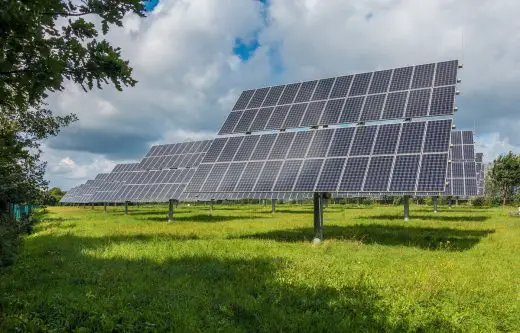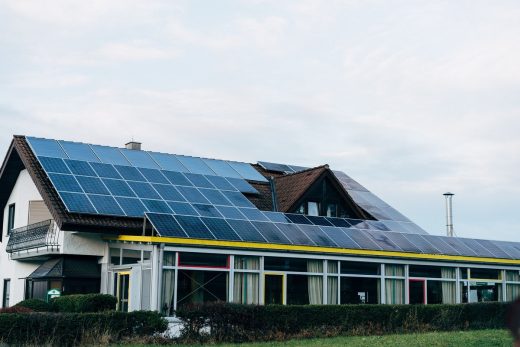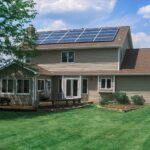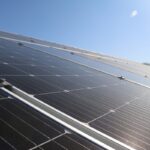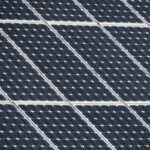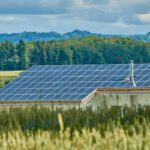Solar architecture and renewable energy guide, Photovolataic renewables save money advice, Building PV electricity
The Solar Connection: Blending Architecture and Renewable Energy
2 May 2023
As the demand for clean and renewable energy increases, integrating solar panels into architectural design has become a crucial component of sustainable building practices. Today we will explore how solar energy is revolutionizing the world of architecture, touching upon various energy efficient options for architects who are shaping the future of eco-friendly design.
Solar Panels: Types and Technology
Solar panels come in three main types: monocrystalline, polycrystalline, and thin-film. Each type has its own set of advantages and disadvantages in terms of efficiency, cost, and aesthetics. Advancements in solar panel technology continue to improve the efficiency and performance of photovoltaic (PV) systems, making them more accessible and viable for integration in architectural projects.
Architectural Innovations in Solar Energy Integration
Innovative approaches to incorporating solar panels into buildings are changing the way we think about architectural design. Building-integrated photovoltaics (BIPV) and solar glass are two examples of materials that seamlessly blend into a structure’s facade, providing clean energy without compromising aesthetics. Passive solar design principles optimize solar orientation, window placement, and insulation to make the most of natural sunlight and heating, reducing energy consumption.
Architects and designers are also striving to achieve net-zero energy buildings, which generate as much energy as they consume, through solar panels and green building certifications such as LEED and BREEAM.
Energy Storage and Management
To maximize the benefits of solar energy in architecture, efficient energy storage and management systems are essential. Solar energy storage, often in the form of batteries, allows buildings to store excess energy generated by solar panels for use during periods of low sunlight.
Grid-tied and off-grid systems offer different approaches to energy distribution and consumption, with grid-tied systems allowing for the exchange of energy with the utility grid, while off-grid systems operate independently. Inverters and micro-inverters convert the DC electricity produced by solar panels into AC electricity for use in buildings, while energy management systems help optimize energy usage and monitor performance.
Government Policies and Incentives
The adoption of solar panels in architecture is also influenced by government policies and incentives. Programs promoting the use of solar panels in architectural projects, along with tax credits and grants, encourage property owners and developers to invest in renewable energy solutions. These policies not only support the growth of the solar industry but also contribute to a greener, more sustainable built environment.
Cost and Return on Investment
While the initial cost of installing solar panels may be high, the long-term savings in energy bills and potential for increased property value make solar energy an attractive investment. Solar load calculations and insolation considerations help determine the optimal size and placement of solar panels to maximize energy production and return on investment.
As the cost of solar technology continues to decrease, more homeowners and property developers are turning to solar panel experts to design and install solar-powered systems in their buildings.
Challenges and Limitations
Despite the numerous advantages of solar panels in architecture, there are also challenges and limitations to consider. Aesthetics and design integration can be a concern for property owners who prefer traditional architectural styles, although advancements in BIPV and solar glass materials are addressing these concerns. Structural challenges, such as the weight of solar panels and the need for additional support, must also be considered during the design process. Climate considerations, including the availability of sunlight and potential for shading, can impact the efficiency and feasibility of solar-powered architecture.
Future Trends and Developments
The future of solar panels and architecture is promising, with emerging technologies and innovative design concepts continually pushing the boundaries of sustainable design. As more architects and designers embrace solar energy, the construction industry is expected to see a growing number of solar-powered buildings. Developments in solar panel technology, such as increased efficiency and reduced costs, will make solar energy more accessible to a wider range of projects.
Additionally, advancements in energy storage and management systems will further enhance the potential of solar-powered architecture. These innovations, coupled with supportive government policies and incentives, will help drive the widespread adoption of solar energy in the built environment.
Plugging Into Solar Power
By integrating solar energy into building design, architects and designers are not only creating more sustainable and energy-efficient buildings but also contributing to a greener, more eco-friendly future.
With the continued innovation and adoption of solar panels in architecture, supported by solar panel experts, the possibilities for sustainable design are limitless. As we look toward a future where renewable energy plays a central role in our built environment, the integration of solar panels in architecture will undoubtedly remain a key factor in the evolution of sustainable design.
Comments on this guide to The Solar Connection: Blending Architecture and Renewable Energy article are welcome.
Solar Panels Articles
Solar Panels Posts
How architects implement solar panels in design
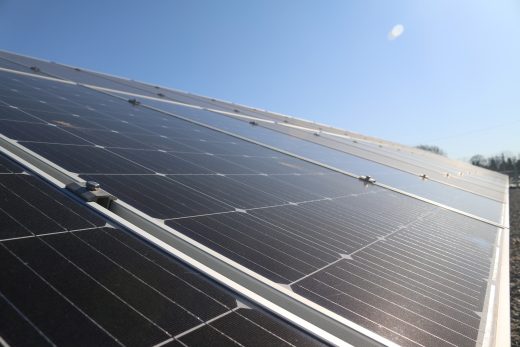
image source : pixabay.com
DIY Solar System: how to install solar panels
Before Installing Solar Panels
Types of roofing for solar panel installation
Building
Residential Architecture Articles
Comments / photos for the Solar architecture and renewable energy advice guide page welcome



